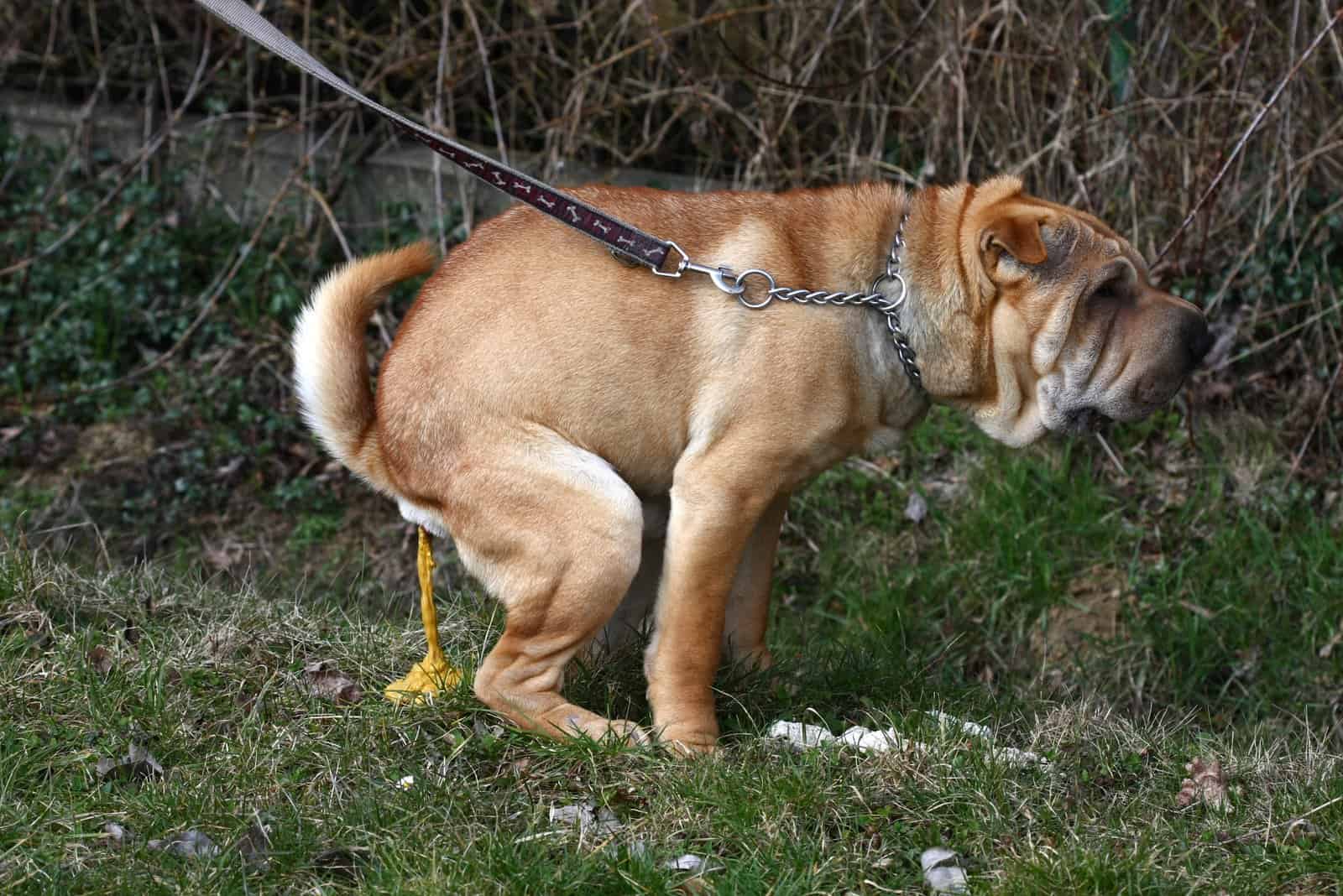Cleaning your dog’s poop while walking is certainly not among your favorite activities.
However, today, we cordially tell you that from now on, you should be observing this activity from a positive side: by looking at your dog’s feces, you can monitor his health.
If you notice changes in the content and color of your dog’s feces, there may be a specific health problem. Although a change in stool color may be harmless, it can sometimes indicate more serious infections and illnesses.
In today’s article, we bring you an explanation of yellow dog poop. In some cases, the yellow color of your dog’s poop does not have to indicate any serious medical condition, but unfortunately, sometimes this is an alarm you should not ignore.
So, if you notice yellow dog poop, do not ignore this! Always ask for advice from your vet. You don’t want your lack of responsibility or laziness to be to blame for your pet’s health problems.
If you continue reading, you will learn all the possible reasons why your dog’s poop is yellow, and what you can do to help your pet solve this problem.
What Causes Yellow Dog Poop?
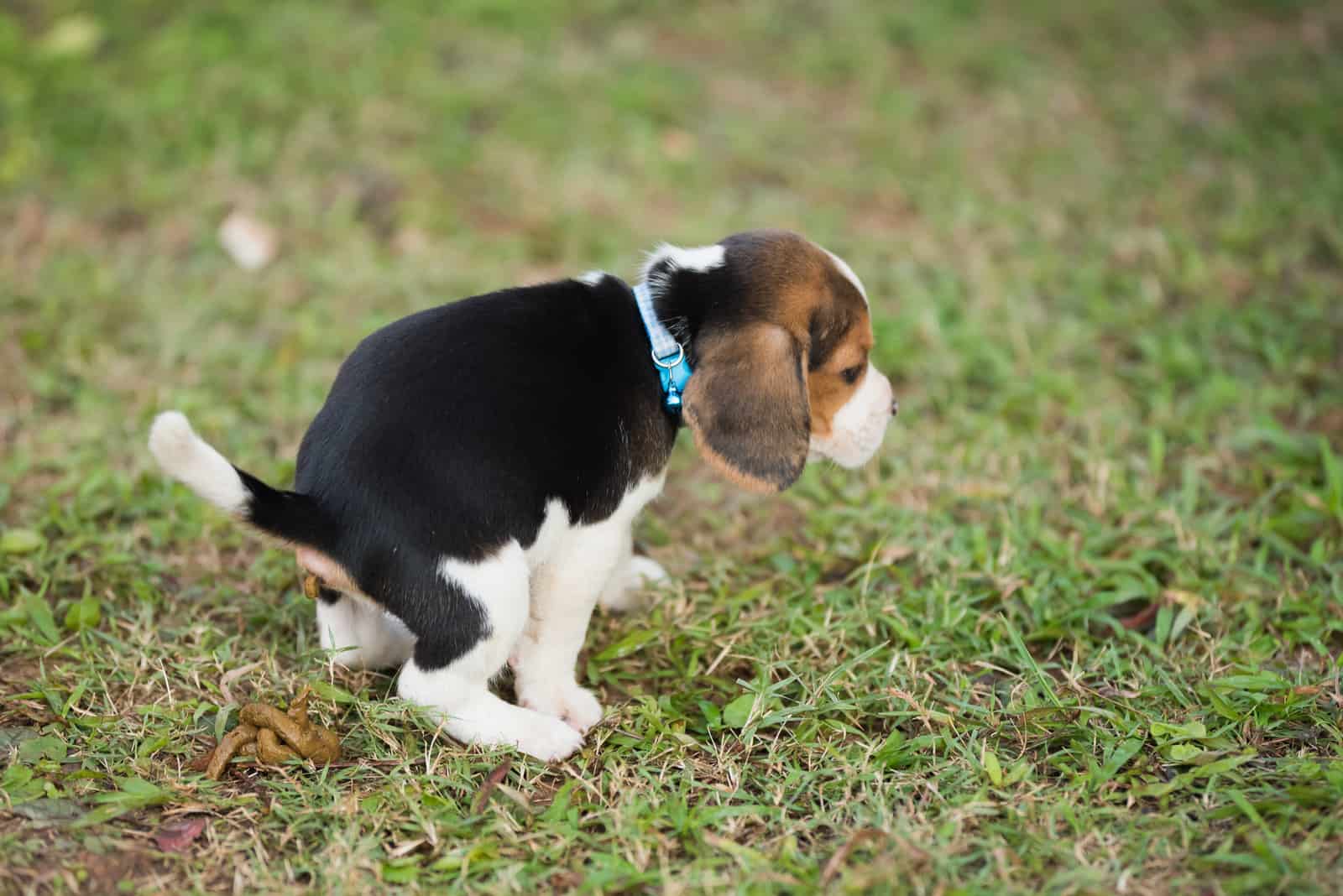
You are used to the usual brown color of your dog’s feces, so any color change would surprise or even terrify you.
We will encourage you right at the beginning: yellow dog poop does not usually indicate a major health problem, while, for example, if your dog’s feces is red, you should contact a veterinarian immediately.
If you notice yellow poop coming from your dog, it is recommended that you immediately start feeding your dog lighter foods, such as white rice. There is a high possibility that this is a minor stomach problem that will be resolved in a short time.
If yellow poop continues to recur after two or three days, it is time to contact a vet.
Why Is My Dog’s Poop Yellow?
You have noticed a yellow color in your dog’s feces. You automatically associate yellow with some alarming conditions, such as liver disease. Before you make the worst possible conclusions about liver problems or similar health issues, we advise you to read the possible reasons as to why your dog’s poop is yellow.
Panicking in such a situation can not help, but at the same time, we advise you not to ignore it if you notice changes in your pet’s feces. It is from the feces that it is possible to see the overall health of your dog’s body.
Why Does My Dog’s Poop Smell So Bad?
Cleaning your dog’s feces is never the most enjoyable experience. But, if you have noticed not only a yellow color in the feces, but also an extremely unpleasant odor that you have not encountered before, your dog may have Giardia infection. What is Giardia?
Giardia is a health condition caused by parasites, and dogs become infected by drinking dirty water that has been in contact with feces, or by touching another dog’s feces on the street.
If your dog is infected with Giardia, you will notice weight loss and a light yellow color in his feces. To make sure your dog does not become infected with Giardia, clean water must always be available for him.
Also, do not allow your dog to drink water anywhere during a walk. Even though you are a responsible dog owner who cleans your dog’s feces off the street every time, many owners do not act this way.
Therefore, many dogs will become infected with Giardia precisely because of the other dog’s feces left on the street.
Yellow Poop Together With Diarrhea
Not only have you noticed yellow stools from your dog, but shortly afterward, your pup got diarrhea. In such a case, the culprit is usually inappropriate food. Yellow dog poop together with diarrhea could also happen if the dog has some food allergies.
If your dog is now elderly, do not ignore the appearance of yellow stools in combination with diarrhea. The food he enjoyed when he was younger probably does not suit him anymore. Each age requires different care for the dog.
Therefore, consult your veterinarian about which type of food would best suit your pet and whether, for example, some vitamins should be added to his regular diet.
RELATED: Puppy Diarrhea At Night: Why Does It Happen?
What Causes The Color Of Dog Poop To Be Yellow?
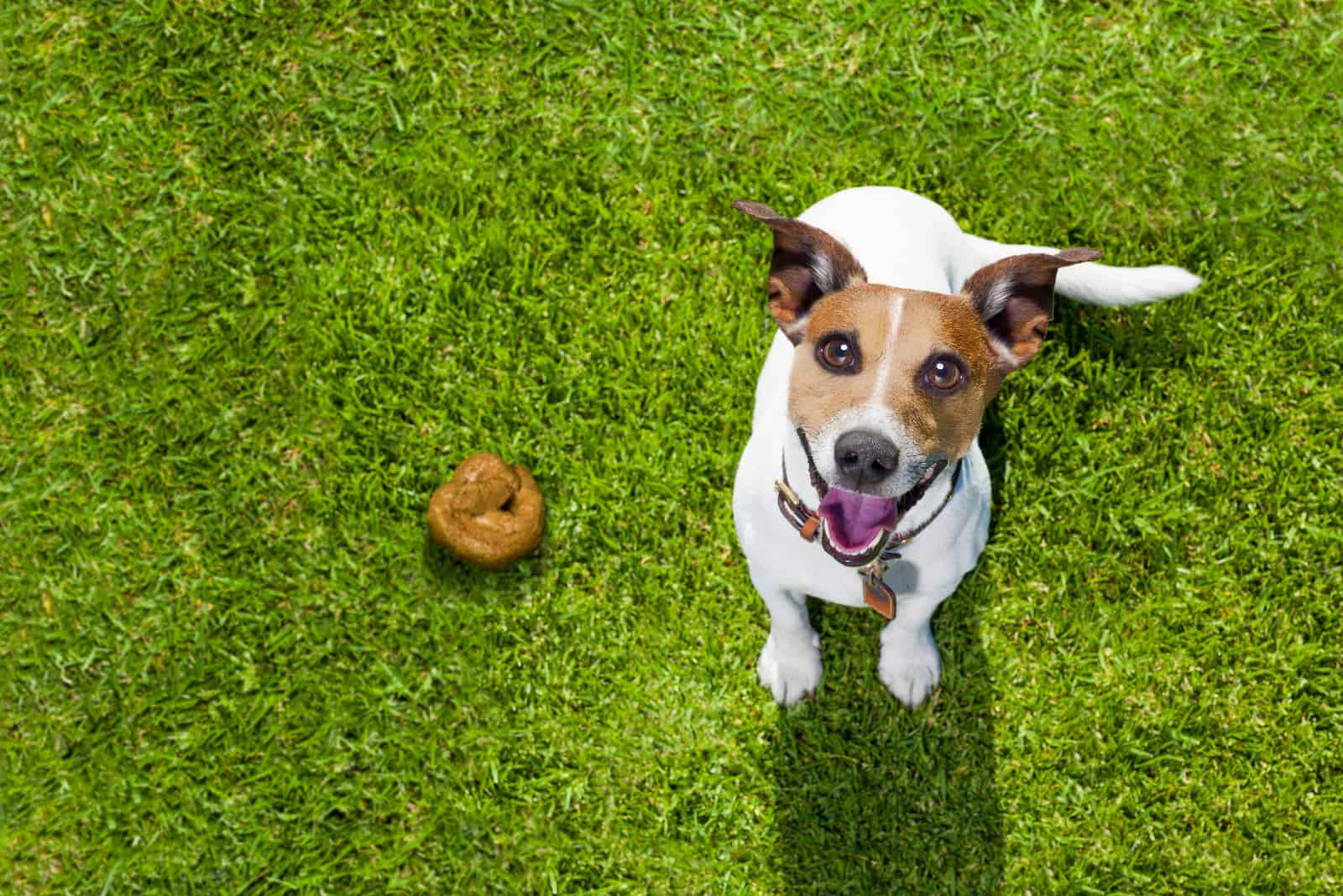
There are several common causes of yellow feces in dogs. These are usually harmless causes, but sometimes yellow stools can be a sign of a more serious health problem. Let’s look at the list of seven main causes of yellow mucus in a dogs’ poop.
1. Inadequate Nutrition
If you notice a mustard yellow color in your dog’s feces, there is a high possibility that your dog might be suffering from food intolerance.
A dog’s diet is important at every stage of its life, especially at the developmental stages. The same type of food does not suit all dog breeds equally. Therefore, if you have had other breeds of dogs before, be well informed about what will suit your new pet the best.
Also, if you have recently changed the food your dog eats: the new food could cause an upset stomach in your dog.
If you have checked the type of dog food that is ideal for your pet, and his feces is still yellow, your dog may have trouble digesting food. In such a case, it is necessary to visit a veterinarian and consider further treatment of this problem.
2. Your Dog Might Have Eaten Something Inedible
We all know how dogs love to put every object that comes to them in their mouth. Well, even this activity of theirs can sometimes be the culprit of yellow feces. If your dog has eaten a yellow toy or a crayon, for example, there is a good chance that you will find the yellow pigments in your dog’s feces.
If your dog has eaten something inedible, he could also have symptoms, such as constipation and vomiting. If you notice that your dog has digestive problems or is in pain, visit a veterinarian!
3. The Dog Might Be Struggling With Parasites Or Bacterial Infection
The yellow color in dog feces may also indicate that your dog is currently struggling with parasites or some bacterial infection in his body.
If a veterinarian’s examination shows that the dog does have parasites, you will probably need to change his diet and perform deworming.
4. Gastroenteritis
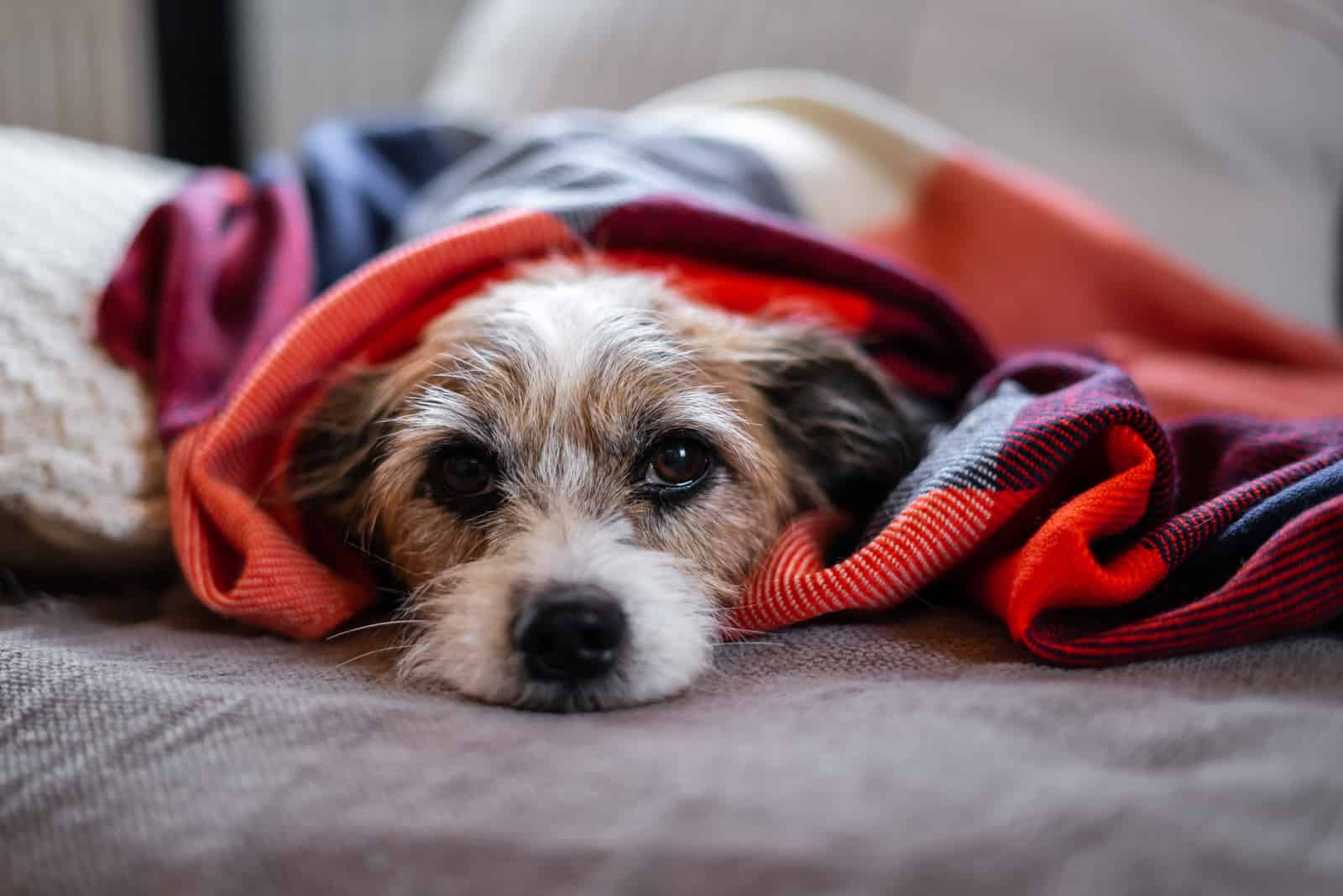
Yellow feces may also indicate that your dog is suffering from gastroenteritis. In addition to yellow stools, the common signs of gastroenteritis are vomiting and abdominal pain.
If you notice yellow feces in your dog, as well as reduced energy and poor appetite, your dog may have gastroenteritis.
To be able to diagnose this health condition, the vet will ask you various questions about your dog, such as:
• What is his usual diet?
• What did your dog eat yesterday and today, and in what quantity?
• When did you notice the first symptoms?
• Has your dog had stomach problems before?
• Is your dog on any medications?
As a responsible dog owner, it is very important to monitor for symptoms, such as discoloration of feces because such signs may indicate more serious health problems.
5. Liver or Biliary Issues
Just like for humans, the liver is one of the most important organs for dogs. Why? Well, drugs are decomposed, vitamins are stored, and bile acids are produced for digestion in the liver.
For a dog’s body to function normally, it is extremely important that the liver is completely healthy, and that it does its job. How do you know if something is wrong with your dog’s liver? The first symptom you may notice is jaundice: your dog’s skin, eyes, gums, and finally his stool may turn yellow.
If, in addition to jaundice, you notice symptoms such as vomiting, diarrhea, or weight loss, your dog’s liver should be checked immediately.
6. Gallbladder Issues
Gallbladder problems in dogs can potentially be very dangerous, and in some cases, even fatal.
This organ in dogs is located directly near the liver and the pancreas. Jaundice is one of the most common signs of gallbladder problems in dogs. Therefore, if you notice yellow feces in your dog, along with other symptoms such as vomiting or abdominal pain, then gallbladder dysfunction might be the health problem that your dog is struggling with.
While there are no exact rules you need to follow in order to make sure diseases like this won’t occur in your dog, there is still something you can and should always do. This refers to the proper nutrition of your dog, as well as the monitoring of symptoms that may indicate changes in its health.
7. Pancreatitis
The pancreas is an organ in dogs that produces and releases digestive enzymes. If this organ is not able to produce digestive enzymes, a health issue called Exocrine Pancreatic Insufficiency (EPI) occurs.
One of the symptoms of pancreatitis in dogs is yellow poop, together with vomiting, diarrhea, and depression.
Pancreatitis in some dogs occurs in a mild form, and can be very easily remedied. However, sometimes pancreatitis is a serious medical condition that, in some cases, can lead to death.
My Dog’s Poop Is Yellow: What Should I Do?
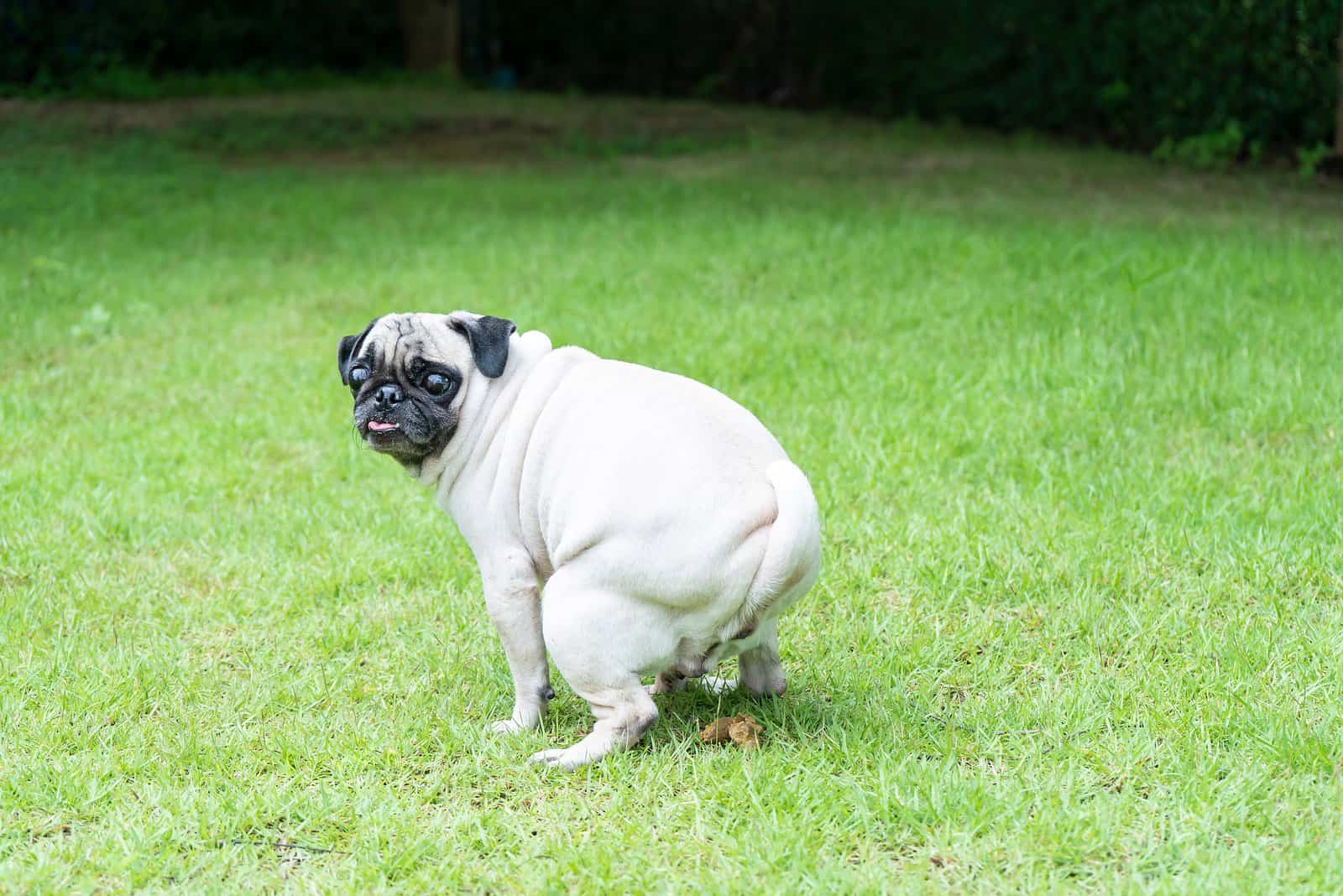
You will notice yellow poop in most dogs at least a few times throughout their life. If your dog has had yellow poop a couple of times, and then it returned to its usual color, you have no reason to worry.
These cases of yellow poop are usually caused by short-lived viruses or present reactions to certain foods. However, if the yellow poop continues for more than two or three days, it is best to ask the vet for advice.
By analyzing the dog’s feces, the veterinarian will give you his assessment of the cause of the change in color of the feces. He will also direct you to further treat the problem, so that your dog can recover as quickly and successfully as possible.
If you have just noticed the yellow poop, there are a couple of steps you can take yourself at home before you contact a vet.
How To Help Your Dog With Yellow Poop At Home
These rules do not apply if the yellow poop in the dog is repeated for several days in a row, and you have not done anything yet. If this is the case, you should go to the vet immediately!
On the other hand, if you are just noticing yellow feces for the first time, try the following tips at home:
Step 1: Try not to give any food to your dog for 12 to 24 hours: By doing this, his stomach will recover and he will be ready to digest food normally.
Step 2: After you start to give food to your dog, feed him in smaller portions and do it more often: With this method, you will make sure your dog won’t have problems with yellow poop combined with diarrhea.
Step 3: Feed your dog light food: This includes chicken, fish, and rice. His upset stomach will more easily digest food like these and will get back to normal very soon.
If you have applied these steps and you have noticed that your dog is starting to look better, keep an eye on his stool for a couple more days just to be sure. If this does not work, and your dog seems to get worse, it is time to ask for professional help.
Yellow Dog Poop: Can We Prevent It?
If you have already encountered yellow feces in your dog, you probably know what caused it. To prevent yellow poop from recurring, you should pay attention to the environment in which your dog spends the most time in, as well as his behavior.
We hope that proper nutrition is part of your good care for your pet, but we still remind you of the importance of good food in order for the growth and health of your dog. If you are able, it would be a good idea to remove yellow objects that your dog could swallow, which could cause yellow feces.
All dog owners can hardly resist the pleading gaze of their pets begging them to share their meal with them. No matter how cute they look in these moments, we still advise you to reduce giving human food to your dog.
Your dog may be prone to allergies, and his stomach is very sensitive; therefore, if you share food with your pup, you could actually harm him.
Also, react immediately if you see your dog sniffing around garbage. The sooner you teach him that this kind of behavior is unacceptable, the better it will be for both you and him!
Additionally, make sure that cleaning products and similar chemicals are in a safe place where your dog cannot reach them. We all know how much our puppies love to explore!
Does checking your dog’s poop not sound fun to you? Well, it may not be a delightful activity, but it is for sure an excellent way to monitor your favorite animal friend’s health.
Dog Poop Color: What Is It Saying About Your Dog’s Health?
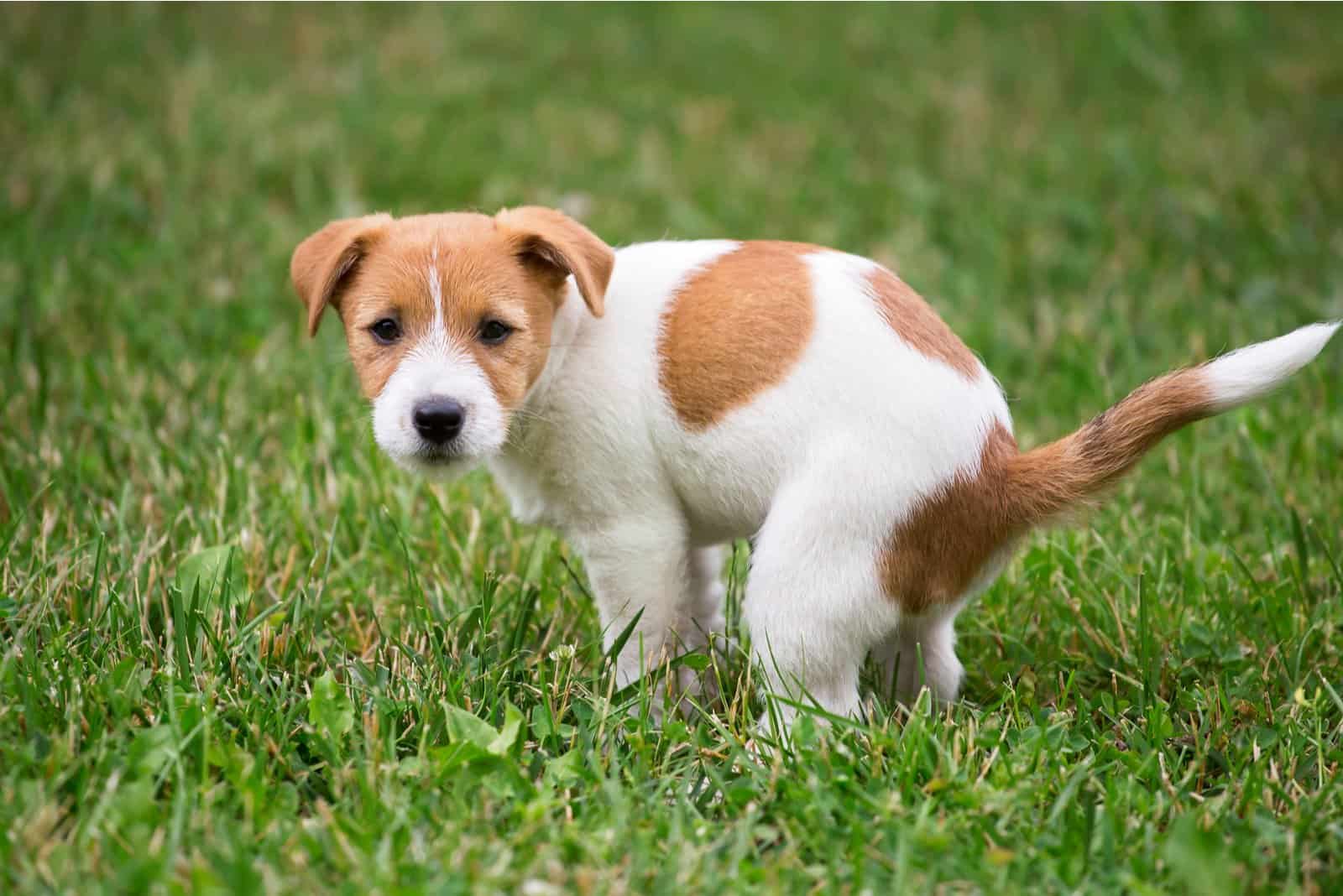
There is no exact standard when it comes to normal dog poop for every dog as each dog breed differs in lifestyle, diet, size, weight, etc.
However, it is still possible to say what dog poop should look like: it should be medium to darker brown, and it should be firm.
Because of certain health problems, most dog owners have noticed a change in the shape or the color of their dog’s feces at least once. If you notice a change in a couple of bowel movements, and then the dog’s poop is back to normal, there is no need to worry.
However, prolonged changes in the color of your dog’s feces may indicate more serious health conditions.
Since early detection of such changes can significantly help you discover health problems of your dog in time, we will briefly explain what each color of dog feces means for the health of the dog.
You can read our dog poop color chart for more details on this topic.
Black Dog Poop
If you notice that your dog’s poop is tarry and black, you need to react immediately.
Black stools may indicate bleeding in the upper GI tract (gastrointestinal tract) or in the dog’s small intestines.
Dog Poop With White Specks
If your dog’s poop is of normal color, but has white specks in it, the dog might be struggling with tapeworms.
The only way to find out if these parasites are the cause of the change in the poop’s color is to take some of the dog feces to a veterinarian for analysis.
Greasy Or Gray Dog Poop
If you notice greasy or gray dog poop, your dog might be struggling with Exocrine Pancreatic Insufficiency. This health condition is very serious, but it can be treated.
Therefore, as soon as you see a gray color in your dog’s poop, it is necessary to consult a vet right away.
Green Dog Poop
If your dog often spends time in nature, he likely eats a lot of grass. Grass is not harmful at all; moreover, it can sometimes be desirable as a food for dogs. However, if you notice a green stool and you are sure that it is not because of eating grass, do not ignore this phenomenon.
Green poop in dogs can indicate intestinal parasites or the ingestion of toxic ingredients.
Red Dog Poop
Just like yellow poop, a dog can have red poop if he has eaten a red object. However, red poop can also indicate problems, such as bleeding in the lower digestive tract, and it can also be a sign of an anal gland infection.
Furthermore, if the dog strains during urination, you may notice red poop as a result.
Yellow Dog Poop
As we have already described, yellow poop in dogs may indicate that the dog has eaten some yellow object or that his digestive tract is reacting to new food.
However, yellow poop can also indicate more serious problems, such as liver or pancreatic disease. Do not guess whether it is a harmless situation or something much more serious – the best idea is to always contact a veterinarian.
Were you even aware that your dog’s poop could take on so many colors? This is a great thing because if you have not encountered an unusual color of feces, it means that you are raising one happy and healthy puppy!
Final Thoughts
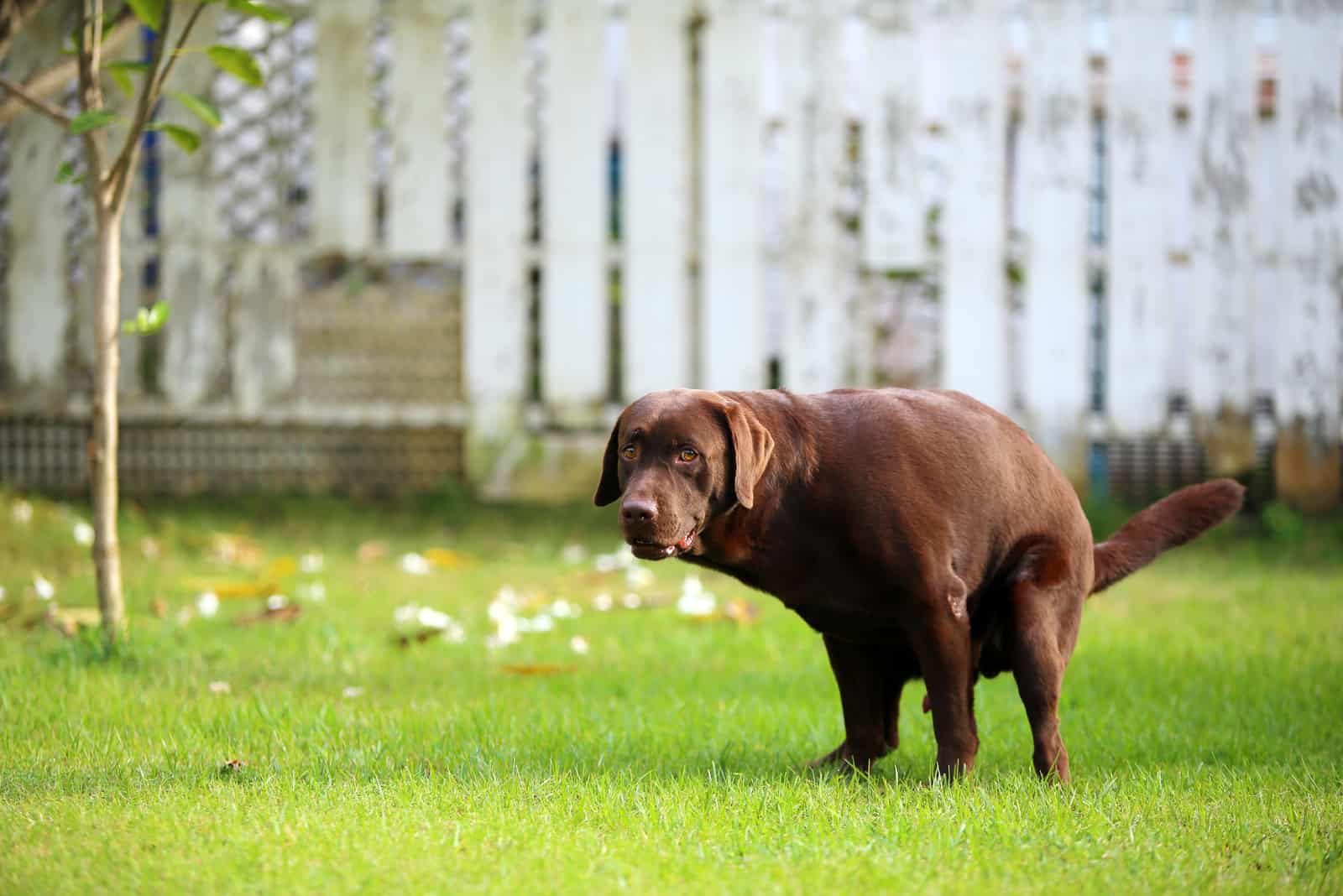
Hopefully, now you have learned what yellow dog poop could be telling you. So, by checking your dog’s stool, you can learn a lot about your pet’s health.
Yellowish poop might just be telling you that your dog ate food dye, but it could also indicate some serious health issues, such as infections in your dog’s intestinal tract, or liver issues.
If the vet confirms that your dog is having some health problems, he might suggest that you add some dietary supplements to your dog’s nutrition. There are also cases when the dog’s health problem has already progressed significantly, so it may be necessary to solve it via surgery.
Although we cannot completely prevent certain health problems, what we can do is ensure a proper diet and healthy lifestyle for our pet, as well as make regular visits to the vet.
Finally, don’t forget to check the color of your puppy’s stool!
Read Next:
• Why Does My Dog Walk And Poop? 14 Answers For You
• My Dog Has Diarrhea But Is Acting Fine: 10 Common Reasons
